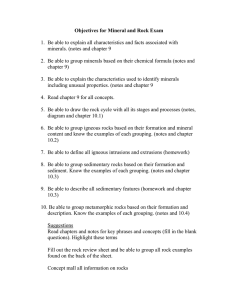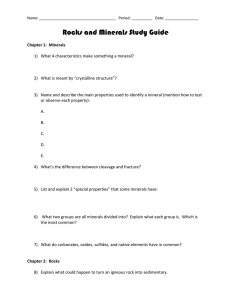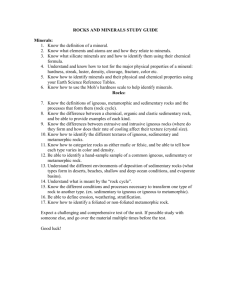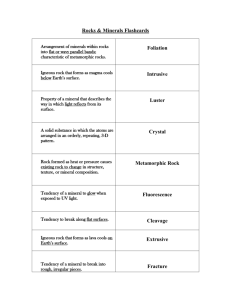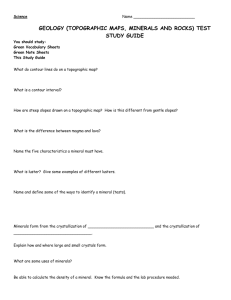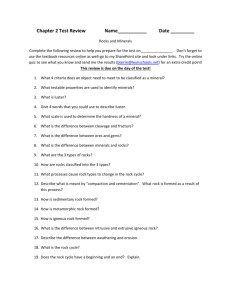Composition of the Earth study guide
advertisement
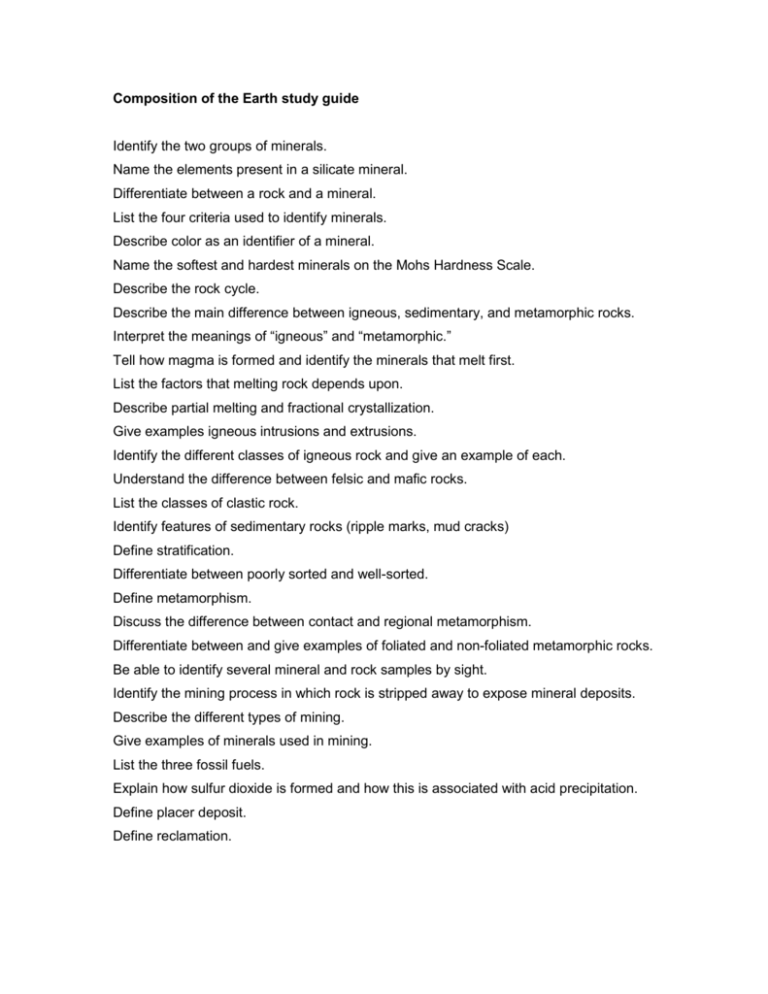
Composition of the Earth study guide Identify the two groups of minerals. Name the elements present in a silicate mineral. Differentiate between a rock and a mineral. List the four criteria used to identify minerals. Describe color as an identifier of a mineral. Name the softest and hardest minerals on the Mohs Hardness Scale. Describe the rock cycle. Describe the main difference between igneous, sedimentary, and metamorphic rocks. Interpret the meanings of “igneous” and “metamorphic.” Tell how magma is formed and identify the minerals that melt first. List the factors that melting rock depends upon. Describe partial melting and fractional crystallization. Give examples igneous intrusions and extrusions. Identify the different classes of igneous rock and give an example of each. Understand the difference between felsic and mafic rocks. List the classes of clastic rock. Identify features of sedimentary rocks (ripple marks, mud cracks) Define stratification. Differentiate between poorly sorted and well-sorted. Define metamorphism. Discuss the difference between contact and regional metamorphism. Differentiate between and give examples of foliated and non-foliated metamorphic rocks. Be able to identify several mineral and rock samples by sight. Identify the mining process in which rock is stripped away to expose mineral deposits. Describe the different types of mining. Give examples of minerals used in mining. List the three fossil fuels. Explain how sulfur dioxide is formed and how this is associated with acid precipitation. Define placer deposit. Define reclamation.
